~ * ~
This article is written by Pauline Laing
Today we are going to review the book “Joy of Zentangle – Drawing Your Way to Increase Creativity, Focus and Well-Being” by Suzanne McNeil CZT, Sandy Steen Bartholomew CZT & Marie Browning CZT. This book was published by Design Originals, 2013.
Zentangles have been on the scene for a few years now. Created by Rick Roberts Sharon Lesh and Maria Thomas, the Zentangle method is a simple drawing technique that they claim can lead to creativity and a feeling of well being. I already knew that the drawings people produce can be very gorgeous, so I was enthused about having a go.
This book has left me a bit uplifted, and also a bit angry! Uplifted, because it led me to pick up a pen and draw in a new way, undaunted by the challenge of the white page. But angry because of all the “business” surrounding the process.
Let’s dispense with the business topic first. A whole page of the book is devoted to it, and the rest of the book is written mindful of the fact that Zentangle is a business. We are told to use the verb “tangle” to describe what we are doing. We are told to credit the Zentangle method if we use it to produce artwork. We are offered useful products for sale at the official web site. On one level, ten out of ten to them for turning a creative idea into a viable business. But on another, I’m very uncomfortable thinking that someone else can own this process. I’m just doodling with a pen, for heavens sake!
But that’s enough business. So, what do you get in this book? There’s a nice bit of background about how Maria and Rick created this method, and some genuine insights into the meditative aspect of drawing. Sorry, tangling. Then we get into a tutorial on how to create a basic Zentangle work. It’s nicely laid out, you’ll have no problem understanding. I enjoyed this bit.
Very soon we are into the juicy bit of the book, the directory of tangles! Definitely the best bit of the book, we get no less than 101 samples of patterns to use. And not just the pattern, but a step by step guide to how to produce them. Some looked really complex to me, but turned out easy to draw when I referred to the steps. I was delighted! Some pages also featured a photograph of a real life object that was the source of inspiration for the pattern. At least, I think that was why they were there. The book didn’t really make the connection here, and I thought that would have been a very useful aspect to add. These directory pages also feature samples of others’ work. I examined them to see the connection to the tangle featured on the page, but in most cases, there was none. A missed opportunity, surely! A few patterns didn’t really lend themselves to using in Zentangles, I thought. They looked more like just a drawing not a pattern suited to filling in a random area. I’d have preferred a little more guidance there. My complaints aside, this section of the book was so useful, I returned to it over and again.
And did it make me more creative? I spent an evening tangling, and finished my first Zentangle. I decided to try creating an original pattern for filling areas. I flipped through photos on my iPad for inspiration. I never did get to creating an original tangle, because it was sidetracked by a very fun calligraphy project I suddenly thought of. So, was Zentangle a failure, because I stopped? Or was it a success, because it warmed me up for a more personal project? I’m going to say success, and based on my experience wit this book, I’d do it all again. And I’d flip through my 101 tangles again too!
My first Zentangle
An eye popping pattern I know how to do now
What happened once my pen was warmed up – not a Zentangle at all!
~*~*~*~*~*~*~*~*~*~*~*~*~*~*~*~*~*~*~*~*~*~*~*~*~
Pauline Laing is a Melbourne based crafter. You can see more of her work at: springchook.blogspot.com.au
~*~*~*~*~*~*~*~*~*~*~*~*~*~*~*~*~*~*~*~*~*~*~*~*~
.
.
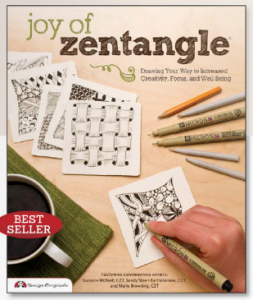
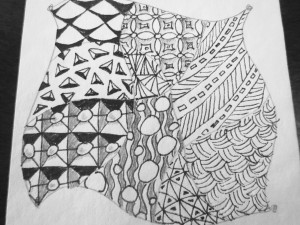
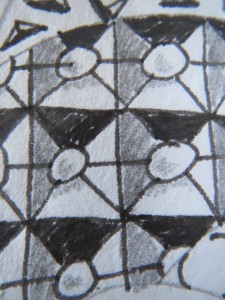
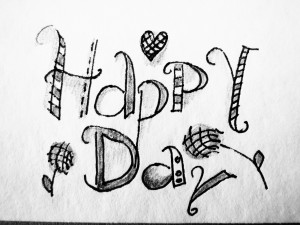
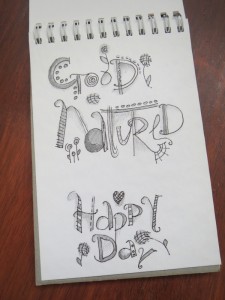
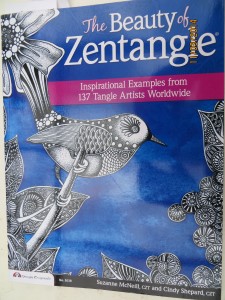
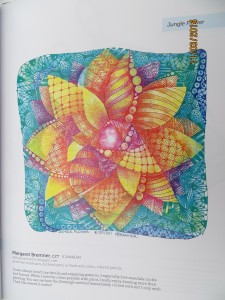
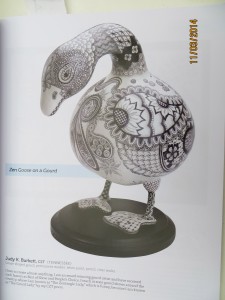
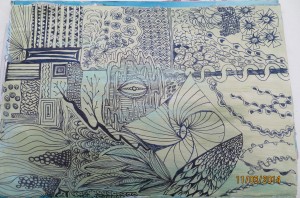



Recent Comments